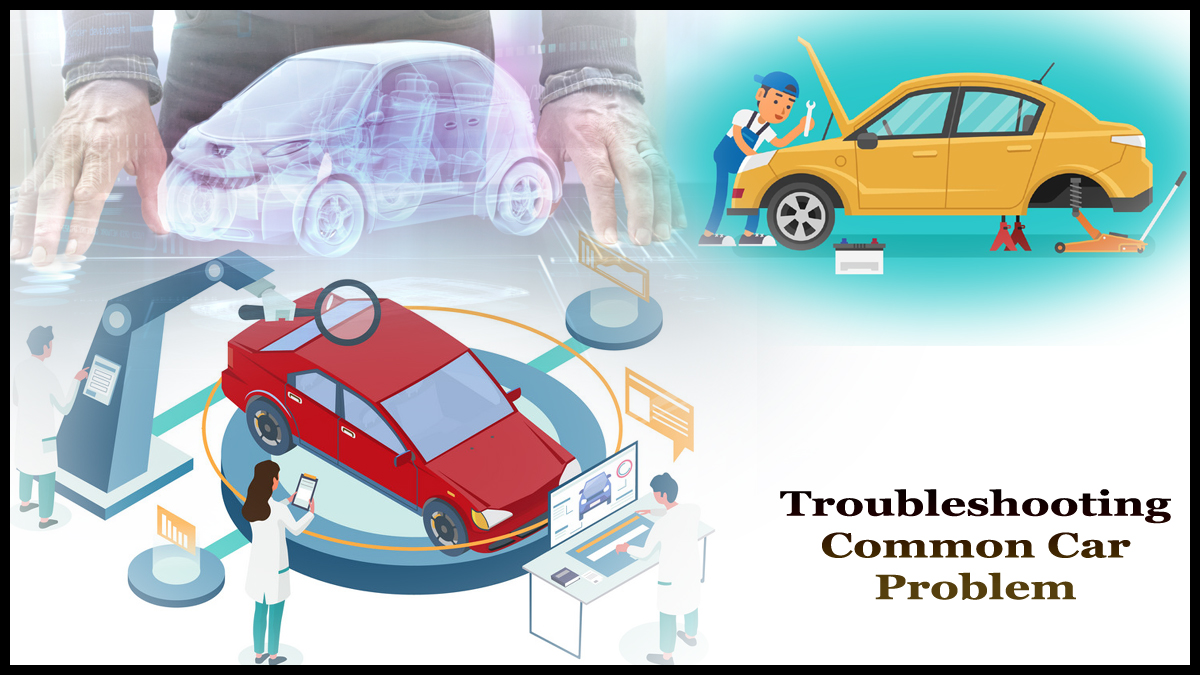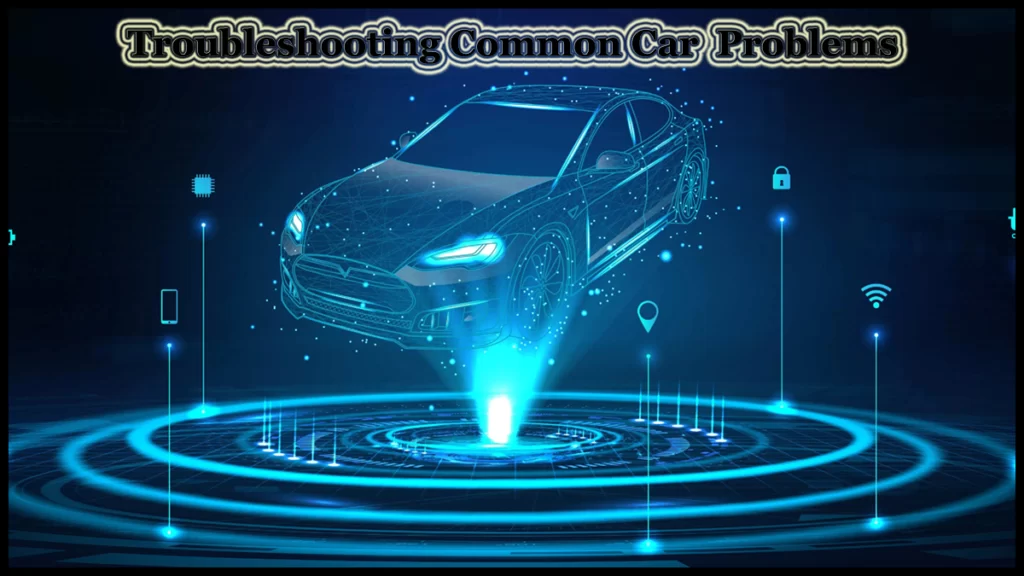
Troubleshooting Common Car Problems
Troubleshooting a car involves identifying and diagnosing problems with the various systems and components that make up the vehicle. Here are some steps to follow when troubleshooting a car:
Identify the problem: The first step is to identify the problem. Listen for any unusual noises, smell for any unusual odors, or look for any warning lights on the dashboard. Try to be as specific as possible when describing the problem.
Consult the owner’s manual: The owner’s manual can provide valuable information about the car’s systems and components. Check the manual for troubleshooting tips and instructions on how to perform basic maintenance.

Perform a visual inspection
Perform a visual inspection: Inspect the car for any visible signs of damage or wear. Look for leaks, cracks, or worn components. Check the tires, brakes, suspension, and steering components for signs of wear or damage.
Check the fluids: Check the oil, coolant, brake fluid, power steering fluid, and transmission fluid levels. Top off any fluids that are low and check for any leaks.
Use diagnostic tools: Many modern cars have built-in diagnostic systems that can provide information about the car’s performance and identify problems. Use a scan tool or code reader to access the car’s diagnostic system and read any error codes.
Perform tests: Perform tests on the car’s systems and components to identify problems. For example, check the battery’s voltage, test the alternator’s output, check the fuel pressure, or perform a compression test on the engine.
Consult a mechanic: If you’re unable to identify the problem or perform the necessary repairs yourself, consult a mechanic. And also A qualified mechanic can diagnose the problem and perform the necessary repairs or maintenance.
Remember that troubleshooting a car can be a complex process and may require specialized tools and knowledge. It’s important to take safety precautions when working on a car, such as wearing protective gear and following proper procedures. If you’re unsure about how to troubleshoot your car or don’t feel comfortable performing these steps yourself, it’s always best to consult a mechanic.
Preliminary Checks to perform when a car not starts
When a car fails to start, there could be many reasons why this happens. Below are some preliminary checks you can perform to help diagnose the problem:
Check the battery: The first thing to check is the battery. And also Check if the battery terminals are clean and tight. Use a voltmeter to test the battery’s voltage. If the battery is dead or weak, it may need to be charged or replaced.
Check the starter motor: If the battery is fine, Also check the starter motor. Also Turn on the headlights and try to start the car. If the lights dim, it could be an indication of a faulty starter motor.
Check the fuel system
Check the fuel system: If the starter motor is fine, the next thing to check is the fuel system. Verify that the tank has enough fuel. As soon as the key is turned to the “on” position, listen for the fuel pump. If you can’t hear the fuel pump, it may be faulty.
Check the ignition system: If the fuel system is fine, the next thing to check is the ignition system. Also Check if the spark plugs are in good condition and have a proper gap. Use a spark tester to check if the spark plugs are firing.
Check the engine: If all of the above are fine, it could also be an engine problem. Check for any visible damage or leaks in the engine. If there are no visible problems, it may be necessary to have a mechanic perform a more thorough diagnosis.
Also Remember that this is just a preliminary checklist, and there could be other issues that are causing your car not to start. If you’re unsure about how to diagnose the problem or don’t feel comfortable performing these checks yourself, it’s always best to consult a mechanic.
Here are some additional preliminary checks that you can perform when a car fails to start:
Check the transmission: If the car is an automatic, make sure it is in “Park” or “Neutral”. If it’s a manual transmission, make sure the clutch is fully depressed. A car won’t start if it’s not in the right gear or if the clutch is not fully depressed.
Also Read – Guide to Troubleshoot Smartphones
Check the security system
Check the security system: If the car has a security system, make sure it’s not triggered. If the security system is activated, it can also prevent the car from starting. Also Try to disabling the security system or unlocking the doors to see if that helps.
Troubleshooting Common Car Problems
Check the alternator: If the car starts but then immediately dies, it could be an alternator problem. While the automobile is moving, the alternator keeps the battery charged. If it’s not working properly, the battery will drain and the car will stall.
Also Read – Troubleshooting Guide for Computers
Check the wiring and fuses: Check if there are any loose or damaged wires or blown fuses. This can also cause electrical problems that prevent the car from starting.
Check the engine oil: Make sure the engine oil level is sufficient. Low oil levels can cause engine damage or prevent the car from starting.
It’s important to remember that these checks are just the first step in diagnosing the problem. If you’re not able to identify the problem, it’s best to take your car to a mechanic who can also perform a more thorough diagnosis.
Troubleshooting Common Car Problems
Also Read – All about National Safety Day

One thought on “Troubleshooting Common Car Problems”